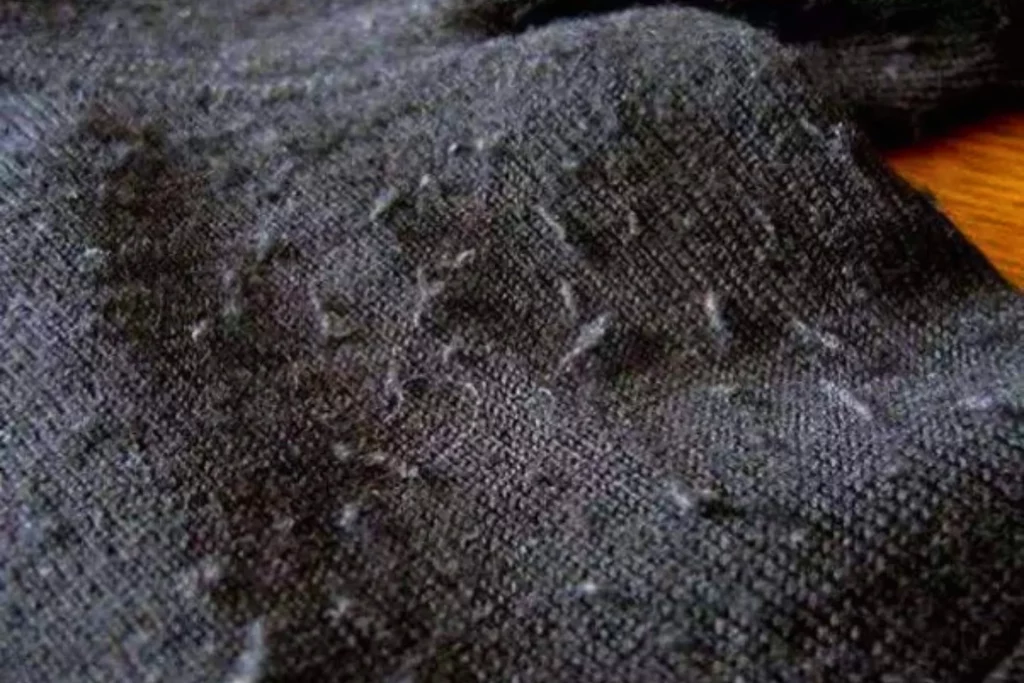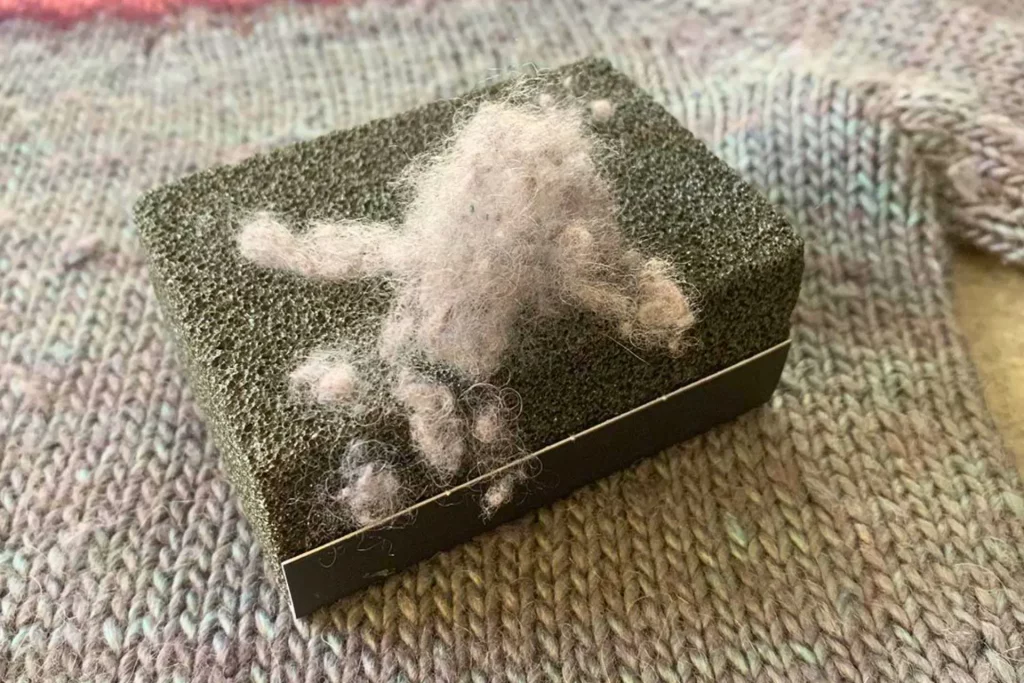Cashmere, known for its luxurious softness and warmth, is a coveted fabric. However, many cashmere enthusiasts grapple with a common concern – pilling. Imagine unmatched smoothness only to experience the mild annoyance of tiny imperfections in the cloth. For those seeking the perfect equilibrium between durability and grandeur in their wardrobe essentials, the battle against cashmere pill becomes all too real.
The romance of cashmere combined with a sincere fear of pilling tells a story of refinement and compassion. Join us as we explore the core of this delicate situation, where finding solutions is just as abundant as the clothing itself. Come along for the ride as we unravel the subtleties and provide advice on how to keep your cashmere treasures looking as luxurious as possible.
Table of Contents
What is Pilling?
Pilling is the natural wear and tear on fabrics, especially knitwear like cashmere. It results in small, unsightly fiber balls on the fabric’s surface, detracting from its pristine appearance. Although it may seem inevitable, it can be managed through thoughtful care practices, ensuring your garments maintain their luxurious allure for an extended period.
Curious if merino wool might develop pilling? No need to worry – we’ve got it covered with a comprehensive guide to protect your merino wool wardrobe from any pilling concerns.
What are the Causes of Cashmere Pilling?

Cashmere pilling is an intricate dance between the delicate nature of its fibers and the rigors of wear. The finest, most exquisite fibers that make cashmere so soft are also prone to tangling and knotting, resulting in the formation of small, unsightly pills on the fabric’s surface, especially in areas that undergo frequent friction, such as the underarms or sides of a garment.
This natural propensity for tangling creates the perfect conditions for small balls of fiber, commonly known as pills, to form on the fabric’s surface. Moreover, external factors like everyday wear, washing, and even environmental conditions can exacerbate this tendency.
The friction caused by movement or contact with rough surfaces can lead to increased pilling, affecting the overall appearance and quality of the cashmere garment. Understanding these inherent characteristics is crucial in addressing and managing the occurrence of pilling, allowing individuals to enjoy the luxurious feel of cashmere while implementing measures to minimize this common issue.
How do I Prevent my Favorite Cashmere from Pilling?
While complete prevention may be elusive, there are effective steps to control and minimize cashmere pilling:
- Rotate Your Wardrobe: Avoid wearing your beloved cashmere pieces too frequently. Allowing the fibers time to recover can significantly reduce the chances of pilling.
- Gentle Washing: Hand wash your cashmere items in cold water with a mild detergent. Avoid machine washing, as the agitation can contribute to pilling. Lay the garment flat to dry, maintaining the fabric’s integrity.
- Lay Flat to Dry: Lay your cashmere garments flat to dry after washing. Hanging them can distort the fabric and increase the likelihood of pilling. Ensure they are in their original shape and size before leaving them to air dry.
- Fold Instead of Hanging: When storing your cashmere items, fold them neatly instead of hanging them. Hanging can cause the fibers to stretch and lead to pilling over time.
- Avoid Rough Surfaces: Be mindful of the surfaces your cashmere comes into contact with. Rough or abrasive surfaces can accelerate pilling. Choose seating options and accessories carefully, especially when wearing delicate cashmere.
- Use a Fabric Comb: Periodically use a fabric comb or a sweater stone to gently remove any loose fibers or pills that may have formed. This proactive approach helps maintain the fabric’s smooth appearance.
How do I Remove my Cashmere Pills?

Removing cashmere pills is a delicate process that requires careful attention to avoid damaging the fabric. Here’s a step-by-step guide on how to effectively remove pills from your cashmere garments:
- Use a Fabric Shaver: Invest in a high-quality fabric shaver with adjustable settings. Gently run the shaver over the surface of the cashmere, focusing on areas with visible pills. The shaver’s blades will trim away the pills without harming the fabric.
- Manual Removal: Carefully pluck pills off the fabric using your fingers for a hands-on approach. Pinch the base of the pill and pull it away with a gentle, steady motion. Be cautious not to tug too hard, which can damage the fibers.
- Adhesive Tape or Lint Roller: Wrap a small section of adhesive tape around your fingers with the sticky side out. Gently dab or roll the tape over the pilled areas. The adhesive will catch and lift the pills away from the fabric.
- Fine-Toothed Comb: Use a fine-toothed comb designed for delicate fabrics. Place the fabric on a flat surface and lightly comb over the pills. This method helps dislodge and lift pills away without causing undue stress on the cashmere.
- Hand Washing with Mild Detergent: Soak the pilled garment in cold water with a mild detergent for about 30 minutes. Gently rub the fabric between your fingers to loosen the pills. Rinse thoroughly and lay flat to dry.
What are the alternatives to cashmere?
Several alternatives to cashmere offer comparable warmth and comfort, each with its unique characteristics. Here are some popular alternatives:
- Merino Wool: Merino wool, which is prized for its delicate texture and fine fibers, offers superior warmth without being heavy. Piling is less common than with cashmere.
- Alpaca: Alpaca fibers are incredibly soft and luxurious, offering a warmth similar to cashmere. Alpaca garments often have a silky texture and are resistant to pilling.
- Mohair: Known for its resilient nature and glossy luster, mohair is derived from the Angora goat. It is a good substitute for cashmere since it is durable and cozy.
- Angora: Angora wool, derived from the Angora rabbit, is exceptionally soft and lightweight. It offers a similar level of comfort to cashmere but with its own distinct texture.
- Cotton: For those seeking a breathable and lightweight alternative, cotton is an excellent choice. While not as warm as cashmere, high-quality cotton garments can provide comfort and softness.
- Silk: Silk is a luxurious and smooth alternative to cashmere. While it may not offer the same level of insulation, silk garments are elegant, lightweight, and less likely to pill.
Exploring these alternatives allows individuals to enjoy the comfort and style of various fabrics while considering factors such as sustainability, texture, and resistance to pilling.
Frequently Asked Questions:
Why does Cashmere pill so much?
Cashmere pills are due to their fine and delicate fibers, which easily tangle and knot with friction. Everyday wear and washing contribute to this, forming small balls of fiber on the fabric’s surface.
How do you get fuzz balls off a sweater?
To remove fuzz balls from a sweater, use a fabric shaver fine-toothed comb or try the freezing method. These methods help trim or loosen the pills for easy removal without damaging the fabric.
How do you wash cashmere?
Hand wash cashmere in cold water using a mild detergent. Gently agitate the water, avoid wringing out the fabric, and lay it flat to air dry. Machine washing and drying can damage delicate cashmere fibers, so handwashing is recommended for optimal care.
How long does cashmere last?
The lifespan of cashmere depends on factors such as quality, care, and frequency of use. High-quality cashmere can last for many years with proper care and occasional wear, maintaining its luxurious softness and appearance.
How should I store cashmere to prevent pilling?
Store cashmere by folding it neatly and placing a sheet of paper between items to minimize friction. Avoid hanging for extended periods, and consider garment bags for added protection against pilling. Keep in a cool, dry place to preserve the quality of the fabric.
Final Thought:
While pilling may be an inherent companion to the delicate fibers of cashmere, our journey has uncovered a repertoire of preventive measures and alternative fabrics that promise enduring warmth and comfort. From the gentle touch of merino wool to the silky allure of silk, each alternative beckons, offering its own unique embrace. In the pursuit of timeless comfort, our understanding of pilling becomes a guide, allowing us to revel in the luxury of our chosen fabrics. As we curate our wardrobes with a blend of sophistication and resilience, the allure of cashmere remains undiminished, reminding us that, in the world of fashion, the path to enduring elegance is paved with knowledge and thoughtful care.

![Does Cashmere Pill? [5 Mighty Hacks for Perfection] Does Cashmere Pill](https://cottoncashmereandwool.com/wp-content/uploads/2023/12/Does-Cashmere-Pill-768x512.jpg)